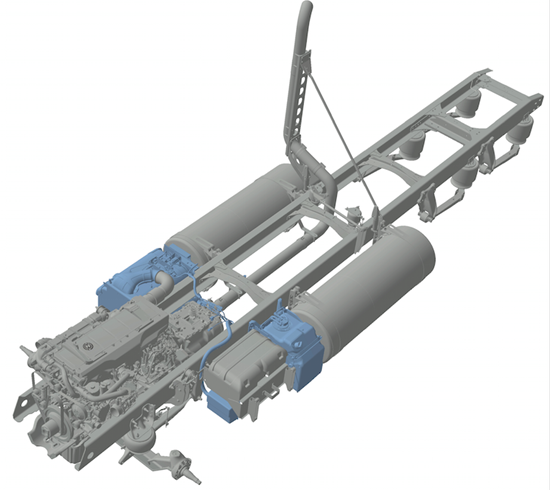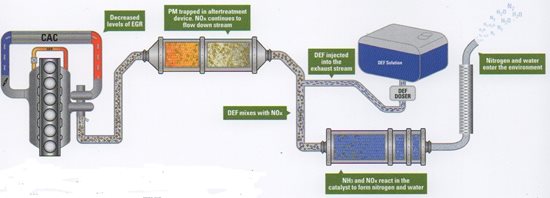We last spoke of the DPF and how it cleans the exhaust. It does a pretty good job but as I said before we needed to do more. Clean air, GOOD. With that said, the engineers went to work on how to achieve cleaner emissions without sacrificing engine performance, fuel economy or life expectancy. We all know that as soon as EGR was introduced we started having some new and different issues with our engines. Performance losses, fuel mileage losses and some reliability issues were beginning to show up. In order to lower our output of toxic emissions, we added even more EGR. The issues were amplified. Then we added the DPF, allowing the engine manufacturers to lower the EGR some because the DPF cleaned the exhaust after the engine.
Along with better fuel systems, (high pressure common rail) for one. Computer programs that run everything engine related were improved and performance came up. Fuel economy was still lower than we would like and we still had EGR cooler issues. For the next round of emissions standards, beginning in January of 2010, cleaning the exhaust even more would, for most engine manufacturers, use Selective Catalytic Reduction (SCR).

Basic Chassis Layout for SCR System
|
|
SCR is a way to convert the nitrogen oxides (NOx), with a catalyst and a reductant, into diatomic nitrogen and water. Catalyst defined is; a substance that causes or accelerates a chemical reaction without itself being affected. SCR catalysts are made of ceramic materials used as a carrier and the active catalytic components are usually either oxides of base metals or various precious metals. The two most common designs of catalyst shapes are honeycomb and plate, honeycomb being most common. Along with the catalyst we must have a Reductant to make things work like they should.
The chosen reductant was Urea, and the urea mixture is called Diesel Exhaust Fluid (DEF). DEF is made with 32.5% high purity urea and 67.5% deionized water. The DEF is injected into the flow of the exhaust, at a typical rate of injection of 1-3% of fuel consumed, vaporizing and decomposing to form ammonia and carbon dioxide. The ammonia together with the catalyst, converts the NOx to nitrogen and water, both harmless are emitted to the environment. This has effectively reduced our noxious emissions to near zero. Since the introduction of SCR we have seen our performance and fuel mileage increase. The amount of EGR has been reduced also, so the engines run cooler, fewer maintenance issues.
I believe the emissions standards are set to increase again, not sure when, but I think the smart people who design this stuff will come up with something. If they do as good on the next round as they did this time, maybe the emissions cleanup will all be done after the engine that would mean more fuel economy and better performance. Clean air, excellent fuel economy and a hot rod truck, what more do you need?
